The archipelago of Malta is widely regarded as one of the best places in Europe, if not the world, to go scuba diving. Despite its small size, the island nation has more dive sites than any other scuba diving destination in the Mediterranean.
Indeed, scuba diving in Malta is incredibly popular due to the perfect conditions to be found there. The waters around the three islands are particularly clear, offering striking visibility underwater. Moreover, the submarine landscape is characterised by incredibly unique rock formations, a number of sunken shipwrecks, and an abundance of wildlife, all of which make scuba diving in Malta an absolute joy.
checkyeti’s team of experts has gathered all the relevant information you need for an exceptional scuba diving holiday in this unparalleled divers’ paradise:
-
Scuba diving in Malta: an overview

Most of the scuba diving in Malta takes place around the islands of Gozo and Comino Malta is in fact made up of three islands, namely the main island of Malta, Gozo, and Comino. The majority of dive sites are found around the islands of Gozo and Comino in the Northwest, which is why most of the scuba diving in Malta takes place here. However, the main island is still home to many reputable dive centres, many of which offer excursions to Gozo and Comino. Places like St. Julian’s and Bugibba, for instance, are typical holiday destinations for people who wish to go scuba diving in Malta.
The area around St. Julian’s is a well-known hotspot for wreck diving, as a number of highly interesting shipwrecks, including some WWII wrecks, are waiting to be explored within the vicinity. Bugibba, on the other hand, is close to the Qawra Reef, one of Malta’s most beautiful reefs – a highlight that should not be missed by anyone planning to go scuba diving in Malta.
When scuba diving in Malta, divers access the dive sites either by entering the water directly from the beach – i.e. shore dive, or from a boat – i.e. boat dive. Boat dives are undertaken when the respective dive site is a little further out at sea and harder to reach by swimming directly from the shore. Nonetheless, the majority of Maltas dive sites are quite close to the shore, wherefore dive centres are less dependent on having a boat. As a matter of fact, it is quite uncommon for dive centres in Malta to own a boat, due to the large number of shore dives available to those looking to go scuba diving in Malta.
How much does scuba diving in Malta cost?
Depending on the type of scuba diving activity you intend to partake in, different prices apply. The table below should provide an overview of the typical price ranges encountered when scuba diving in Malta.
Type of Scuba Diving Activity Price Trial Scuba Diving 39€ - 80€ Scuba Diver Certification Course 255€ - 375€ Open Water Diver Certification Course 360€ - 450€ Advanced Open Water Diver Certification Course 295€ - 325€ Diving Excursions for Certified Divers* 30€ - 75€ *Keep in mind that diving excursions by boat tend to cost a little more than shore dives
Scuba diving in Malta for beginners
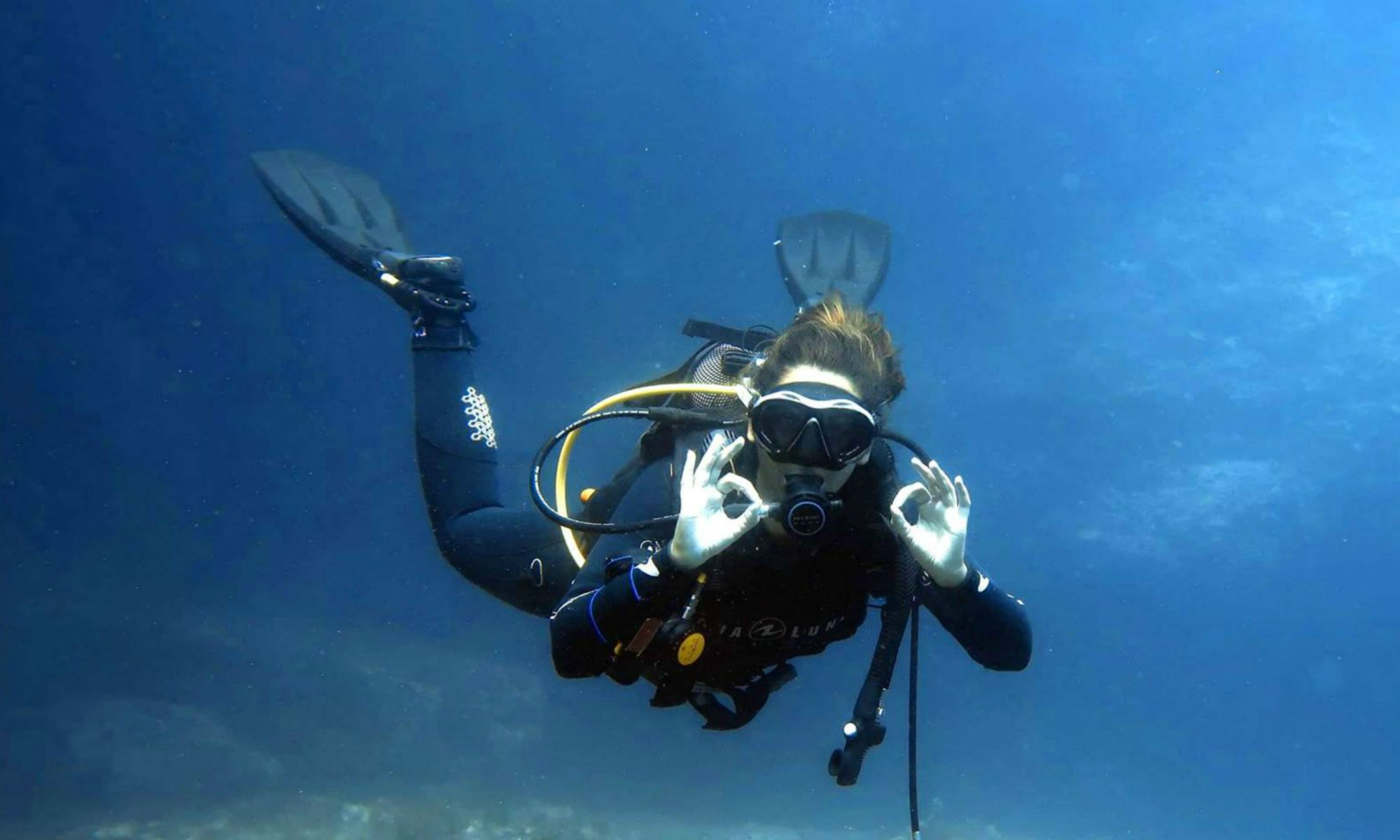
Malta’s dive sites are ideal for beginners due to their easy accessibility © DiveWise Most of Malta’s dive sites are easily accessible from the shore, with weak currents and lots to see at relatively shallow depths. Therefore, scuba diving in Malta is just as enjoyable for beginners as it is for experienced divers. What is more, first-timers can benefit from the broad range of beginners’ scuba diving activities offered by the dive centres. Those who wish to go scuba diving in Malta without any prior experience can choose between trial dives and full certification courses.
Trial dives/Discover Scuba Diving programmes
Trial dives or Discover Scuba Diving programmes, as they are often called, are suited for anyone hoping to give scuba diving a try and to experience what it feels like to breathe underwater, without having to commit to a full, multi-day course.
-
- The typical Discover Scuba Diving programme starts with a theoretical introduction by the scuba diving instructor who talks learners through the proper use of the equipment, how to stay safe underwater, and anything else they need to know about scuba diving in Malta.
- Next, learners are required to complete a so-called ‘confined water dive’ which takes place either in a swimming pool or, as is more common in Malta, in a shallow and protected part of the dive centre’s house bay. The purpose of the confined water dive is for beginners to practice what they learned during the theoretical introduction and to demonstrate to the instructor that they can move confidently underwater.
- Once the instructor feels that the learner has successfully demonstrated all the required skills underwater, they can move on to the main event – the open water dive!
-
The dive centres’ staff know the best dive sites for beginners to go scuba diving in Malta and will take first-timers, either by car or by boat, to the respective entry point. From there, newbies can dive down and explore the surroundings at a maximum depth of 5 to 12m, while under constant supervision by the instructor. All in all, such trial diving programmes tend to take up no more than 3 to 4h.
Certification courses
Those who are ambitious enough and who want to spend even more time scuba diving in Malta might want to opt for a multi-day course to obtain an official scuba diving certification. Such courses typically take 2 to 5 days and are broader in scope compared to Discover Scuba Diving programmes, with the goal of equipping people who are new to scuba diving with the necessary skills to dive more independently. Holding such a certification allows the respective diver to go scuba diving in Malta within the context of organised scuba diving excursions, whereby they can see more of Malta’s famous reefs, caves, and wrecks.
PADI, CMAS or SSI? Which to choose?

There exist a number of diver certification organisations, whose courses can be taken in Malta © DiveWise There exist a number of organisations that issue certifications to people who go scuba diving in Malta for the first time. Malta’s dive centres work with such organisations to offer courses that are in line with their respective standards. PADI, the Professional Association of Diving Instructors is by far the most common and most widely recognised diver certification organisation. PADI offers a broad range of courses for beginners as well as for more advanced divers that follow a predetermined set of theory lessons, confined water dives, and open water dives. As such, the PADI course contents are the same at every PADI-affiliated dive centre, no matter where you choose to go scuba diving in Malta, or anywhere else in the world.
However, some dive centres prefer to work with other organisations such as CMAS, or SSI. Both CMAS and SSI courses are, generally speaking, very similar to PADI courses in terms of course structure and content, wherefore certifications from these organisations are equally recognised by most dive centres. Hence, it is ultimately down to personal preference which organisation one chooses to get certified by, especially since all three organisations require dive centres to follow very strict safety standards.
What is the best time to go scuba diving in Malta?

The waters around Malta reach peak visibility between the beginning of May and the end of October © DiveWise The great thing about scuba diving in Malta is that it is an all-year-round activity. The warm waters of the central Mediterranean allow scuba diving excursions to take place even in the winter months. Nevertheless, the high season is, without doubt, from early May to late October. This is when visitors can enjoy the best weather and underwater visibility reaches its peak.
As a result, those who go scuba diving in Malta during the summer months are likely to spot all kinds of creatures that live beneath the sea, such as starfish, octopuses, seahorses, moray eels, sea breams, barracudas, lobsters, groupers, red mullets, wrasses, and many more. During this time, dive centres organise day trips to the other Maltese islands of Gozo and Comino on a more frequent basis. In particular the months of September and October are perfect for scuba diving in Malta because the islands are less packed with visitors and the water is still warm.
The best dive sites to go scuba diving in Malta
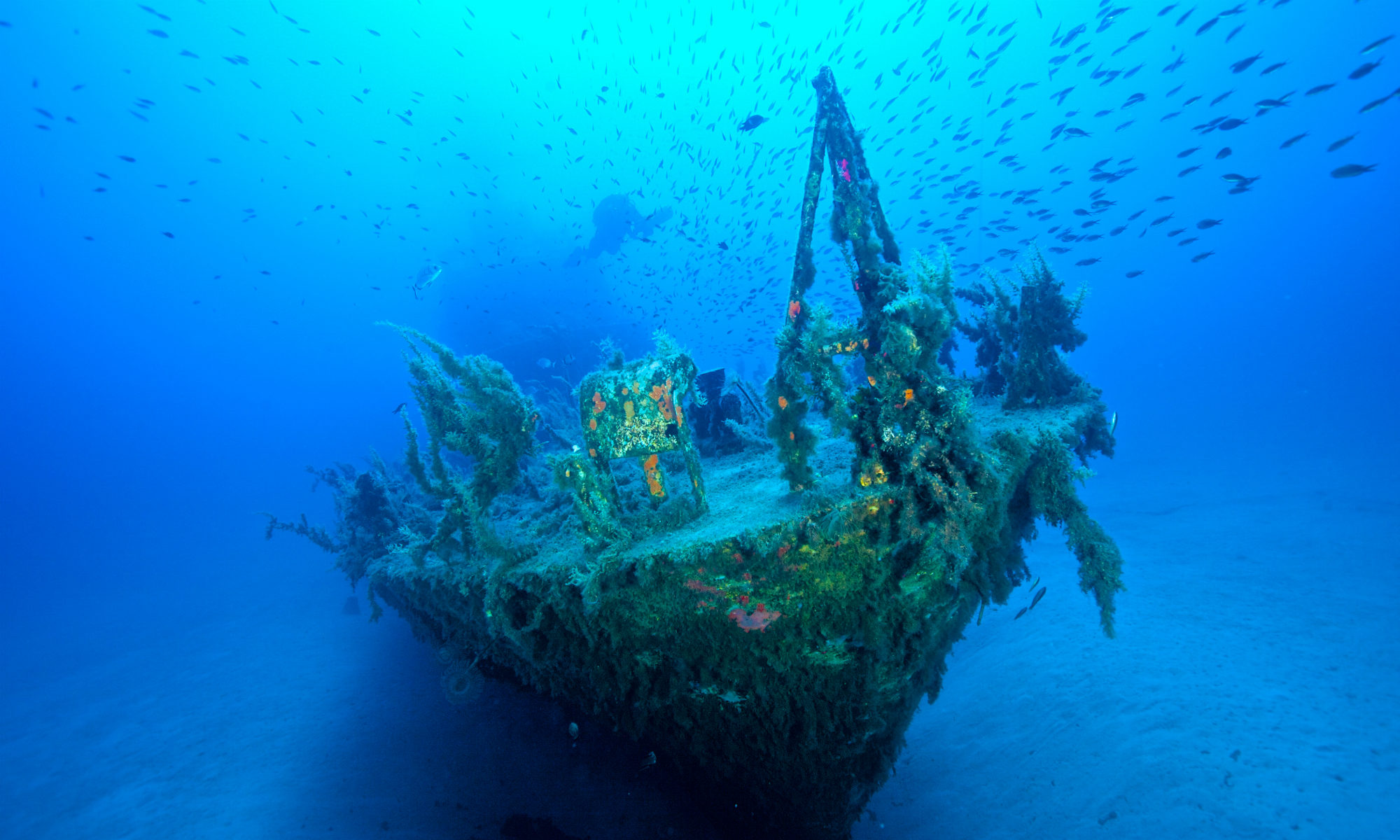
Malta is well-known for its many shipwrecks that are scattered all around the archipelago © OrangeShark Diving Centers Malta has countless amazing dive sites that are well worth a visit. As a matter of fact, there are a total of 25 wrecks scattered around the archipelago that make for unforgettable scuba diving experiences. As they lie at different depths, all divers that intend to go scuba diving in Malta will find a wreck dive that suits their experience level – no matter whether they are entry-level divers or more advanced tec divers.
In addition, the numerous reefs, drop-offs and caverns that can be found along the coasts of each of the three islands guarantee that scuba diving in Malta never gets boring! Nonetheless, a couple of dive sites stand out as absolute hotspots that should definitely not be missed when scuba diving in Malta.
The Blue Hole
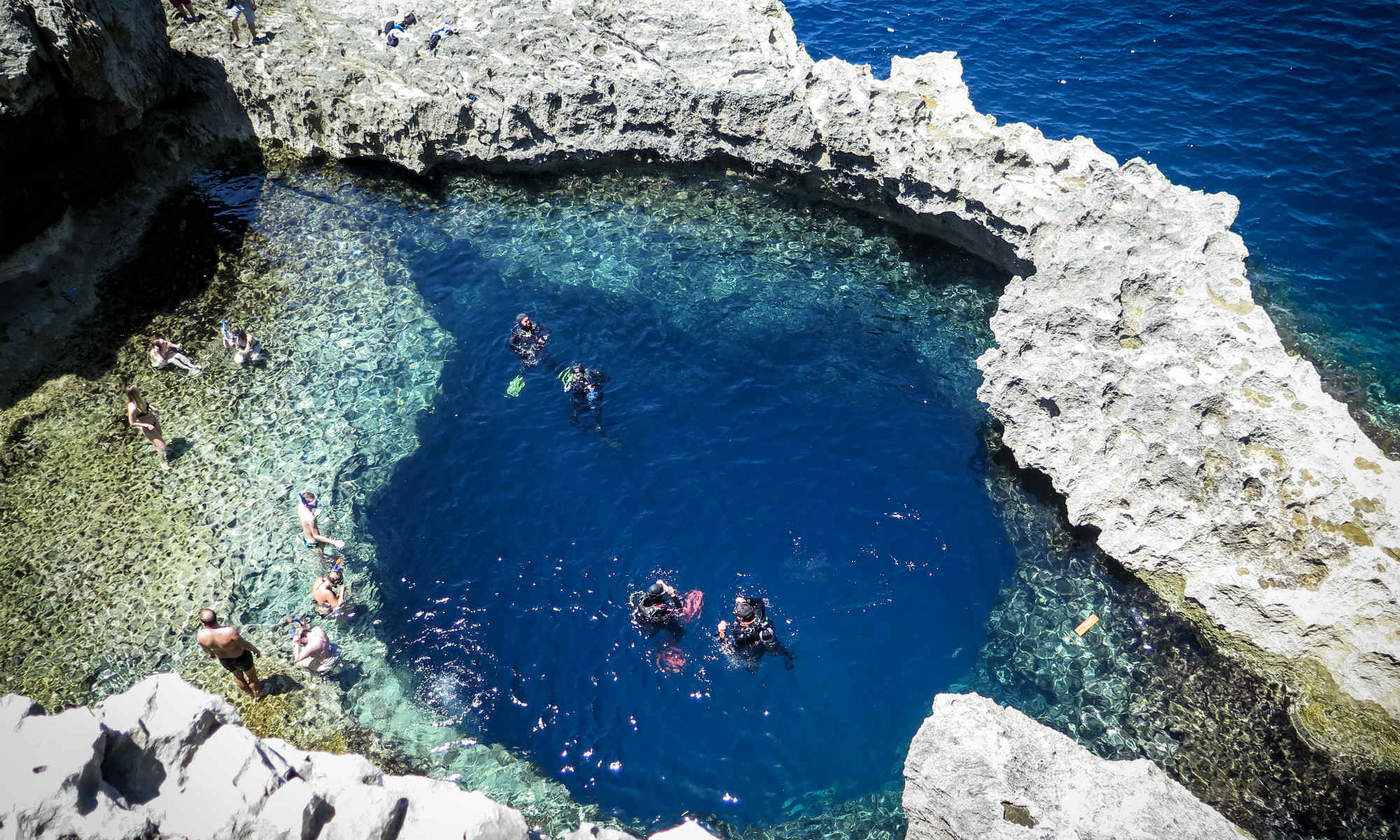
The Blue Hole on the western coast of Gozo is one of Malta’s most spectacular dive sites ©WaterWorld Water Sports The Blue Hole on Gozo’s western coast is repeatedly cited as being one of the most spectacular dive sites Malta has to offer. The dive starts at a marine reservoir that looks like an outdoor swimming pool. Divers descend down the hole and reach a large arch that leads into the open sea, allowing divers to observe beautiful rock formations and colourful marine wildlife. Since there are different routes at different depths to swim along, the Blue Hole dive site is suitable for divers of all levels, making it a hugely popular destination amongst those who go scuba diving in Malta.
The Inland Sea and Tunnel
The Inland Sea is located close to the Blue Hole, meaning it can theoretically be visited on the same day as the Blue Hole. Here, divers swim along an 80m long tunnel that creates fascinating light effects when the sunlight hits the water at particular angles. However, many choose to bring along a torch in order to better be able to explore the cave walls. At the opening of the tunnel, there is a 30m drop off which divers can swim down to discover a stunning biodiversity. It must be noted though, that this dive site is recommended for more skilled divers that already have a certain amount of experience.
The Santa Maria Caves
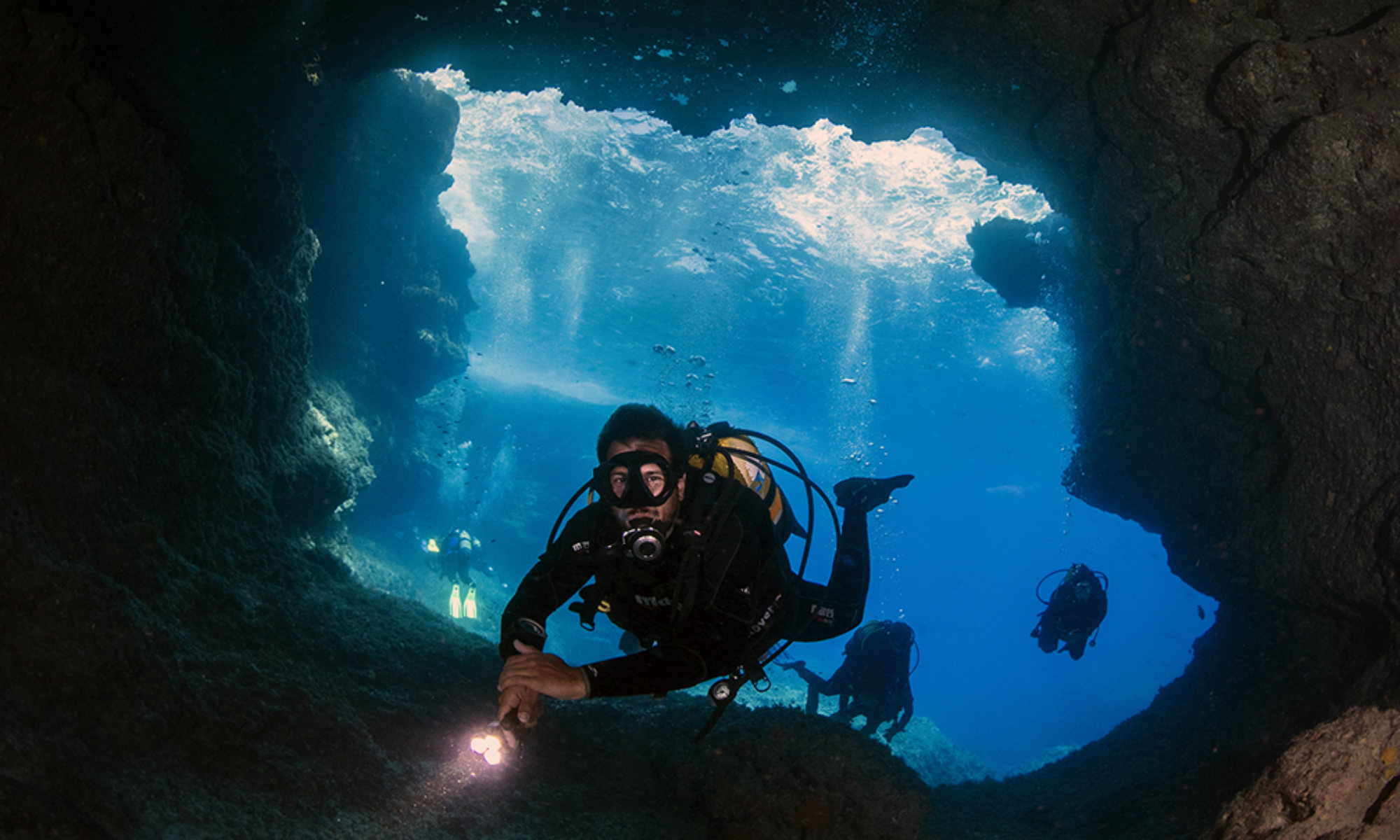
The Santa Maria Caves are popular with scuba diving beginners since they are quite shallow and wide © OrangeShark Diving Centers Scuba diving in Malta would not be the same if it weren’t for the island of Comino and its Santa Maria Caves. This cave system on the northern side of Comino is made up of 10 caves that are home to large amounts of different creatures. Also, what makes these caves so ideal for scuba diving is the fact that they are very shallow, causing sunlight to be reflected everywhere. Consequently, the visibility here is impeccable, and divers of all levels, including beginners, can enjoy the natural beauty of this unique underwater landscape.
Cirkewwa
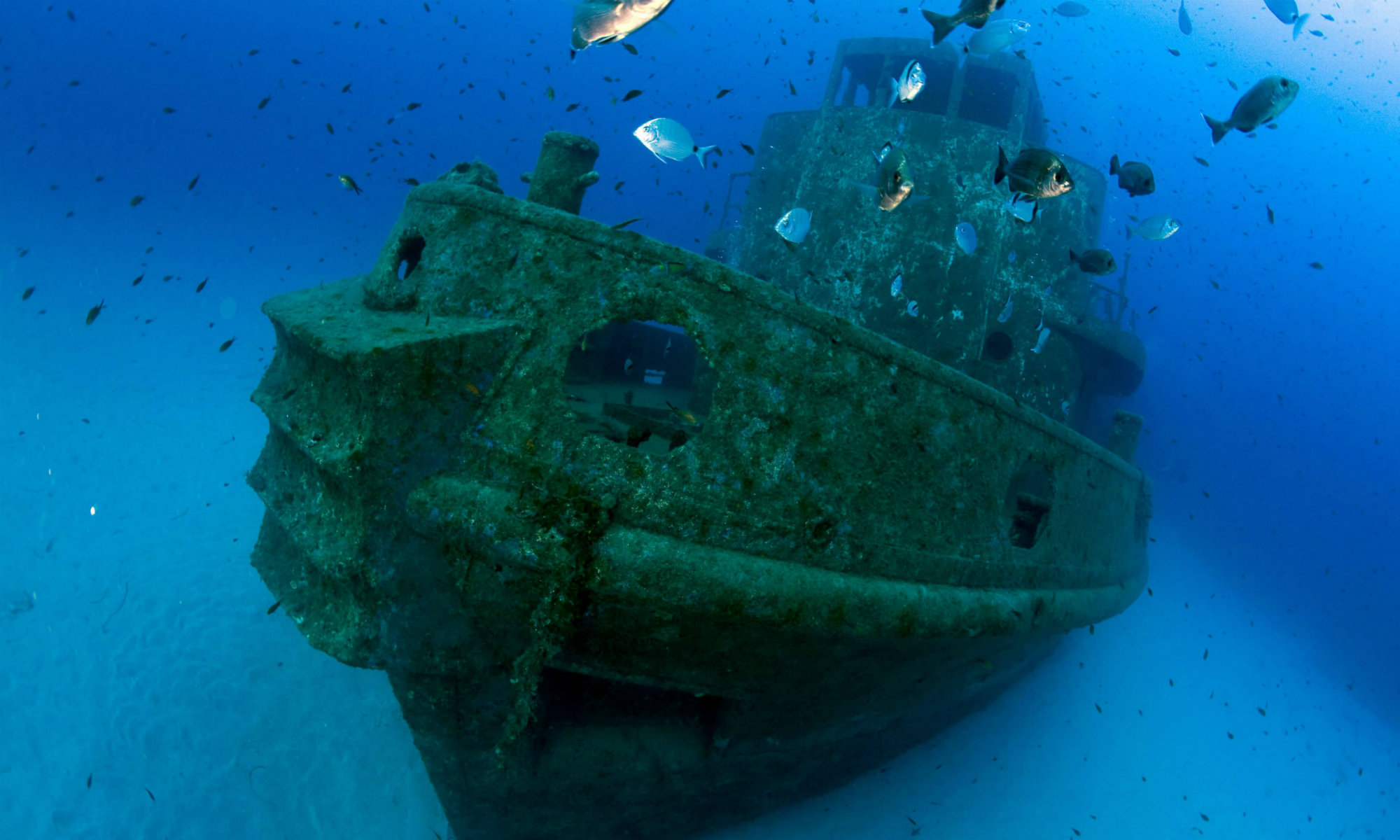
The Rozi Tugboat shipwreck is still well intact, thereby inviting divers to come and explore it © OrangeShark Diving Centers Cirkewwa, on the northern tip of Malta’s main island, is a popular destination for scuba diving excursions because there are actually two points of interest for scuba divers to explore. On the one hand, the Rozi Tugboat wreck lies a mere 150m away from the shore, making it easily accessible by swimming over a gorgeous reef. The ship is 40m long and is, in fact, still intact and in an upright position, making it possible for divers to safely enter the engine room and the wheelhouse.
On the other hand, scuba divers at Cirkewwa can also look out for the Madonna statue which is situated on a 10m deep plateau. While scuba diving beginners can roam around the plateau, experienced divers can swim off its edge and plunge down along the wall to a depth of 30m, thereby exploring numerous tunnels and swim-throughs. Interestingly, this dive site is also quite popular for night dives, something that can be of interest to divers with a little more experience who want to try something new.
The Qawra Reef
A particularly well-known dive site that is often mentioned when talking about scuba diving in Malta is the Qawra Reef. This strikingly beautiful coral reef on the northeastern side of Malta is characterised by a dramatic drop-off, resulting in an exciting wall dive with several caves to explore. Since the caves have wide openings, even those who are fairly new to scuba diving can swim inside them and have a look around, while experienced divers can dive down to depths of 30 or even 40m.
I love spending my summer outdoors. When the temperatures rise, my inner adventurer comes to life, and no matter where I go on holiday, I’m always looking for fun activities that allow me to explore what nature has to offer.
